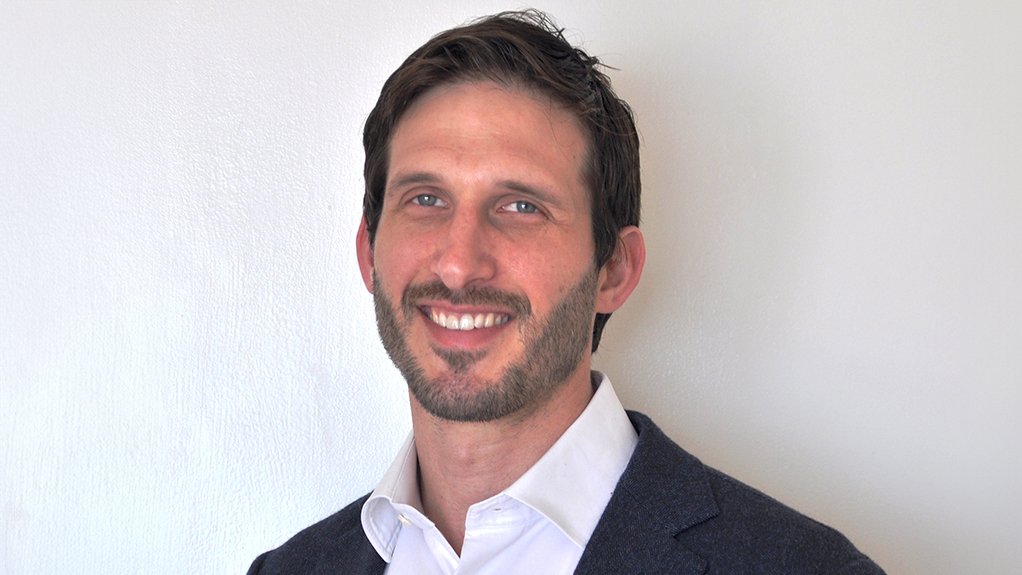HotBot geyser devices deliver energy savings, lower power surges to grid
Since launching its HotBot devices for smart geyser management in 2020, energy solutions developer Plentify has recorded considerable energy savings across its user base, as well as lower demand surges to the grid following loadshedding.
Fifteen years since State-owned power utility Eskom started implementing loadshedding, the scheduled power cuts are still wreaking havoc on the economy, including through impacts on power infrastructure and household finances. However, tools such as HotBots help to address some of these issues, says Plentify.
Plentify CEO Jon Kornik tells Engineering News that one of the unintended consequences of loadshedding is many geysers switching back on at the same time when power is restored, which leads to sudden surges in demand and often damage to municipal infrastructure when the power trips.
This phenomenon, called comeback load, increases the energy consumption of geysers by about 90%, which, considering that geysers already account for about half of household electricity use, creates problems for local municipalities, the grid operator and consumers alike.
Kornik elaborates that comeback load directly increases electricity costs for large consumers such as municipalities, residential estates and apartment blocks, which often pay charges based on their maximum demand levels each month.
This results in higher household energy bills despite persistent power cuts. For example, comeback load can drive up electricity costs by about R1 300 a year per geyser, as per Eskom’s Megaflex tariff.
Kornik adds that comeback load is also damaging to electricity distribution networks owing to overloaded transformers, substations and other infrastrucutre, which, again, raises system costs and leaves the grid in a more fragile state.
While municipalities have been sequencing power returns to individual substations to help curb comeback load, this often results in extended loadshedding periods for residents and higher operational costs, since technicians have to drive between substations to switch power back on.
DEMONSTRATING EFFICIENCY
To offer a more sustainable solution, Plentify partnered with the City of Cape Town, the Hessequa local municipality, residential estates and retirement villages to gauge what impact artificial intelligence-enabled geyser management devices would have on curbing comeback load and reducing household energy bills.
The 30-month-long pilot project involved the installation of 500 HotBot devices in households and estates in Cape Town. The devices were coordinated such that geysers drew power at slightly different times from one another, and according to user habits.
The pilot project was supported by German development agency GIZ and clean energy financing facility EEP Africa, with independent oversight having been done by University of Cape Town’s Measurement and Verification Inspection Body.
The project confirmed that the HotBot devices eliminated comeback load after bouts of loadshedding, and flattened maximum demand to much lower than even without loadshedding.
Kornik tells Engineering News that the devices reduced each geyser’s electricity use during peak periods by up to 80% and cut maximum demand at any point in time across the entire fleet of geysers by up to 60%.
This yielded substantial energy cost savings for households, while ensuring that all participants to the study had hot water when they wanted it.
The pilot project also proved how the devices, when coordinated, can prevent damage to distribution infrastructure and defer the need for major investments in substations and transformers.
Kornik says that, with intelligent control, about twice as many geysers can be connected to the grid without placing any more strain on infrastructure.
On a broader scale, the HotBots assist the national grid operator by enhancing the predictability of demand, which translates to reduced unplanned outages caused by tripping.
By shifting geyser energy use away from peak hours, while still ensuring households have hot water when they need it, the devices can reduce strain on the grid during the early mornings and evenings when Eskom often has to rely on expensive diesel generators to meet demand.
Kornik is confident that by installing HotBots in just a quarter of households in a city such as Cape Town, it could cut loadshedding in the mornings and evenings by a cumulative 20 hours every month.
Additionally, the solution helps to address the cost of living crisis by improving each geyser’s overall energy efficiency by up to 24%, simply by switching them off when they do not need to be consuming electricity.
Plentify ultimately hopes to contribute meaningfully to restoring energy security in South Africa through a holistic demand management solution.
INNER WORKINGS
Every HotBot user installs an application to set their preferences for when they typically need hot water. The device also monitors the actual use of hot water to predict future use patterns and works around constraints such as loadshedding.
The HotBot comprises a 15 cm by 15 cm box, with a few sensors that attach to various parts of a geyser. The sensors allow for data collection and self-control decision-making.
Plentify uses a revenue grade metering chip to measure actual electricity use in high resolution, as well as digital twinning that makes a sophisticated simulation model to determine the optimal use of geysers. The company collects data about the enviromental factors related to the geyser, including ambient temperature and inlet temperature, to further optimise use.
The optimisation algorithm of the HotBots, when multiple ones are installed in an area or estate, effectively develops a cluster heating schedule for each geyser to deliver hot water at the lowest cost and at a rate that serves the grid best.
Kornik explains that the company sells the HotBots individually to consumers, residential property developers for use in an estate, and solar installers to boost the performance of solar systems, for example.
He adds that, for developers to get the best return on investment out of their solar systems, they need to manage load. “If you can turn off geysers at certain times of the day, it requires a smaller battery, but with the same level of energy security,” Kornik states.
Beyond loadshedding, the devices have a part to play in the country’s energy transition, he adds, explaining that HotBots enable users to take advantage of the variable tariffs on the grid.
Additionally, management devices such as HotBots can ensure more predictable maximum energy demand, which allows for better infrastructure planning at a national or municipal level.
Moreover, Kornik says, about 70% of residential energy demand is shiftable in some way, not just geysers. He highlights that all high-load appliances, such as pool pumps and refrigerators, can be load-managed.
Plentify is developing its load management technology for other types of appliances and plans to take more solutions to market soon.
Comments
Press Office
Announcements
What's On
Subscribe to improve your user experience...
Option 1 (equivalent of R125 a month):
Receive a weekly copy of Creamer Media's Engineering News & Mining Weekly magazine
(print copy for those in South Africa and e-magazine for those outside of South Africa)
Receive daily email newsletters
Access to full search results
Access archive of magazine back copies
Access to Projects in Progress
Access to ONE Research Report of your choice in PDF format
Option 2 (equivalent of R375 a month):
All benefits from Option 1
PLUS
Access to Creamer Media's Research Channel Africa for ALL Research Reports, in PDF format, on various industrial and mining sectors
including Electricity; Water; Energy Transition; Hydrogen; Roads, Rail and Ports; Coal; Gold; Platinum; Battery Metals; etc.
Already a subscriber?
Forgotten your password?
Receive weekly copy of Creamer Media's Engineering News & Mining Weekly magazine (print copy for those in South Africa and e-magazine for those outside of South Africa)
➕
Recieve daily email newsletters
➕
Access to full search results
➕
Access archive of magazine back copies
➕
Access to Projects in Progress
➕
Access to ONE Research Report of your choice in PDF format
RESEARCH CHANNEL AFRICA
R4500 (equivalent of R375 a month)
SUBSCRIBEAll benefits from Option 1
➕
Access to Creamer Media's Research Channel Africa for ALL Research Reports on various industrial and mining sectors, in PDF format, including on:
Electricity
➕
Water
➕
Energy Transition
➕
Hydrogen
➕
Roads, Rail and Ports
➕
Coal
➕
Gold
➕
Platinum
➕
Battery Metals
➕
etc.
Receive all benefits from Option 1 or Option 2 delivered to numerous people at your company
➕
Multiple User names and Passwords for simultaneous log-ins
➕
Intranet integration access to all in your organisation






















